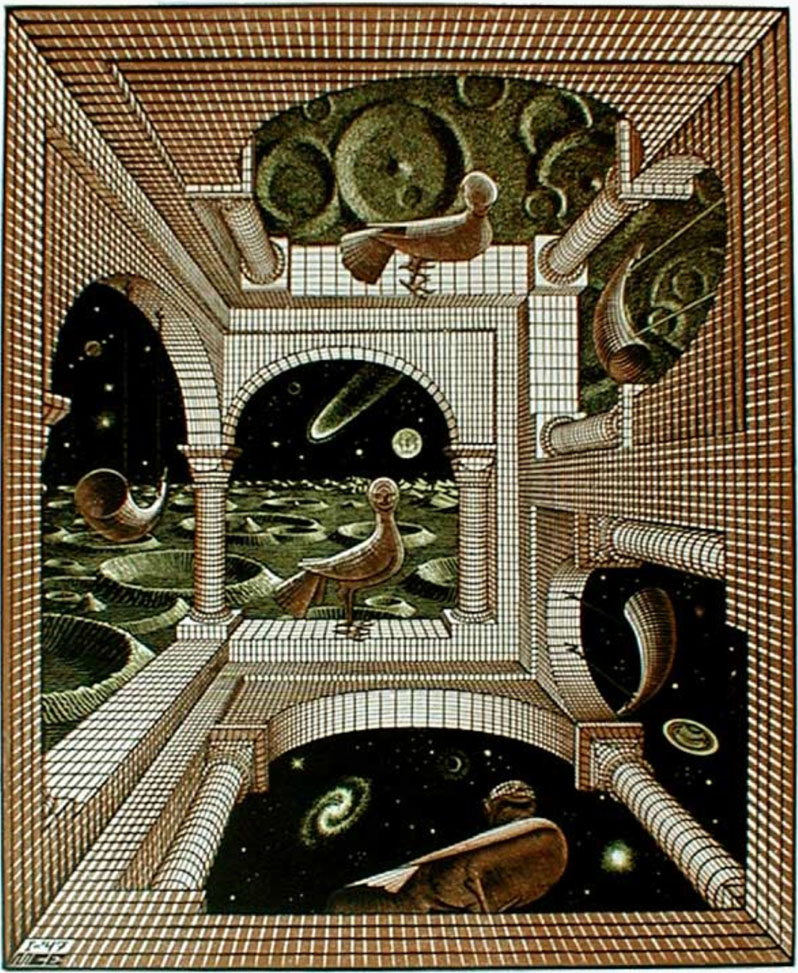| No. |
Assignment Due |
Page and No.'s |
| #1 |
Tuesday
Jan. 22 |
- Provide a Model of a 3-pt geometry in terms of vertices and edges.
- Page 9: 1, 2, 3, 4, 7
- Referring to Problem #7, use vertices and edges to provide a
model of the "four-line geometry".
(Hint: think of straight lines in the Euclidean
plane, no three of which intersect in a common point.)
|
| #2 |
Thursday
Jan. 31 |
- Page 17 (Cederberg): 1,3,5,6,8,9 (note that #10
is postponed).
- Given two statements p and q, provide a Truth Table
for the statment "Both p and q are true".
- Extra Credit - Page 17: #2
|
| #3 |
Thursday
Feb. 7 |
- In an affine plane of order n, prove that given any
line l with k points and any point P not on the line l,
there are exactly k+1 lines incident to P.
- Page 18 (Cederberg): 10,11,14,16.
|
| #4 |
Tuesday
Feb. 26 |
Page 24 (Cederberg): 3,6,8,9 |
| #5 |
Thursday
Feb. 28 |
Use SketchPad to illustrate Desargues' Theorem.
(a) Draw a point P, a triangle ABC and
another triangle A'B'C' which is in perspective to
ABC relative to P.
(b) Construct the perspective line, by drawing
a line between any two of the intersection
points. Notice that this perspective line
passes through the third intersection point.
(c) Hide any unnecessary points/lines and format the lines
to make the theorem clearer.
|
| #6 |
Tuesday
Mar 4 |
Page 29 (Cederberg): 3,4. # 8 [Extra Credit]
For Problem 8, you may refer to the marked-up model or prove it
using the results of this section. Two higher resolution pdf's for
the Desargues' configuration may be found by clicking the two
thumbnail images:
|
| #7 |
Thursday
Apr 3 |
- Prove Pappus' theorem for the parallel configuration:
( i.e. Problem 1.4.3 of the Chapter 1 of the reference.
Assigned in class - 25 pts)
- Given a length a, construct a right triangle with hypothenuse
of that length.
- Given two squares, construct another square whose area is
the sum of the areas of two given squares.
- If a quadrilateral (polygon with 4 sides) has its vertices
on a circle, show that its opposite angles sum to pi.
- Consider the pentagon in figure 2.20 of Chapter 2 of the
reference. (You may use the conclusion of Exercises 2.8.1 and
2.8.2 without proving them.)
First describe the steps to construct the length x=(1+srt(5))/2
using only a ruler and a compass. Next, describe the steps needed,
using this length and ruler/compass, to construct a pentagon
with unit side length.
|
![[USC logo]](usclogo.gif)
